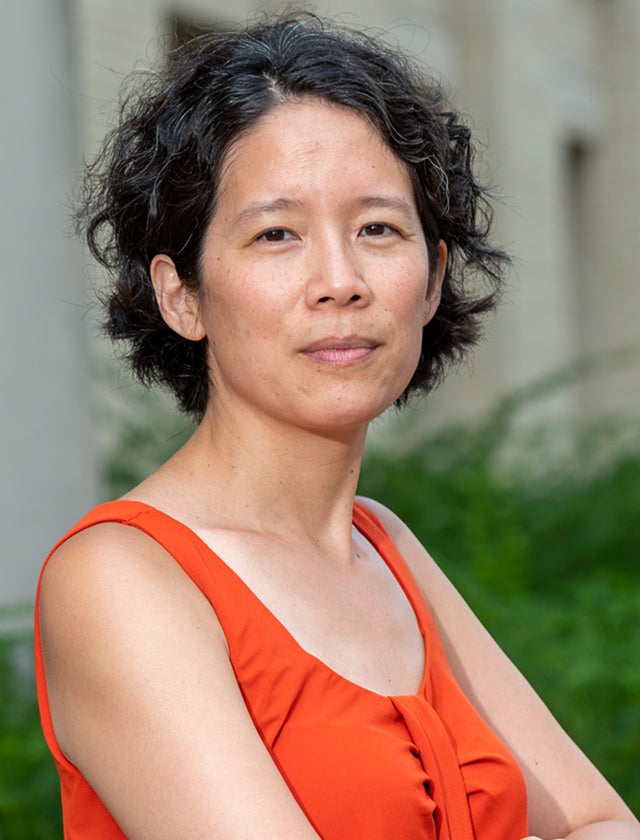
Subscribe to Pittwire Today
Get the most interesting and important stories from the University of Pittsburgh.This creative chemist helped crack a COVID-19 mystery.
Lillian Chong creates simulations that mimic biological processes too small and too fast to be observed by even the most sophisticated microscope. The result is videos that show what’s happening with every atom of a protein cell, down to the quadrillionth — a million billionth — of a second.
Using this technology, Chong helped crack the mystery of how the coronavirus’s spike protein opens in order to attach to human cells.
In the spring of 2020, Chong’s lab in Pitt’s Kenneth P. Dietrich School of Arts and Sciences joined forces with two labs at the University of California San Diego to simulate the coronavirus in atomic-level detail. The simulation effectively slowed down and zoomed in on that spike motion, revealing a “gate” that must open for the virus to infect the body.
The simulation, which contained a million atoms, took only 45 days to create using an advanced simulation method, which was actually quite fast — it would have taken years with standard technology. The team moved so quickly because it used the TACC Longhorn supercomputer and a software package created by Chong to make simulations more efficient, called WESTPA (the Weighted Ensemble Simulation Toolkit with Parallelization and Analysis).
This groundbreaking achievement was instrumental in winning an international team of 28 scientists the 2020 Gordon Bell Special Prize for HPC-Based COVID-19 Research, commonly referred to as the “Nobel Prize of Supercomputing.” Notably the team was woman-led and consisted of a large number of females in a male-dominated field.
Chong has a bevy of other honors including a National Science Foundation CAREER Award and the University of Pittsburgh Tina and David Bellet Teaching Excellence Award. But more than awards, Chong finds joy in the process of discovery in chemistry — and the art — both of which she discovered as a child.
She recalls one of her high school chemistry teachers handing out “mystery” molecules to each student and tasking them to uncover its identity using various experiments. Not everyone solved their mystery (Chong did), but the best part was the experience of testing and trying.
Her teacher also used colorful metaphors to illustrate scientific concepts — an ion is surrounded by molecules like an entourage of friends that follow it around, chemicals in a mixture being separated are like frogs leaping to different lengths. The crisp language applied to science appealed to her. Growing up, Chong wrote poetry, and today she’s part of a weekly writing group where participants share ideas and encourage each other’s works in progress.
At Pitt, she wanted to offer students the chance to pair literary art with science, so she founded the Summer Workshop in Creative Science Writing in 2017. In collaboration with instructors in the Department of English including poet Sam Pittman, Chong organized a summer fellowship for undergraduates to explore creative writing alongside lab study. Students wrote about science-related topics in any genre — narrative journalism, poetry, graphic novels — with guidance from mentors. English instructors offered creative prompts and lessons on word choice or using commas for flow. Chong taught about conveying science with clarity and sometimes showed simulations of brightly colored proteins dancing on screen to evoke a sense of imagination.
“Lillian is so smart but also curious and excited about everything she talks about, which makes her a great teacher,” Pittman said.
Creative writing is also one way Chong maintains balance amid the demands of academic life. It’s something she learned from her father, who immigrated to the U.S. from Hong Kong and worked as an engineering professor and later, a program director at the National Science Foundation. Chong also practices meditation and yoga, and regularly hikes through Pittsburgh parks, especially Frick and Schenley, on her 2-mile walk to campus from home.
— Liberty Ferda, photography by Tom Altany



